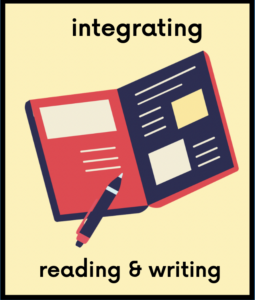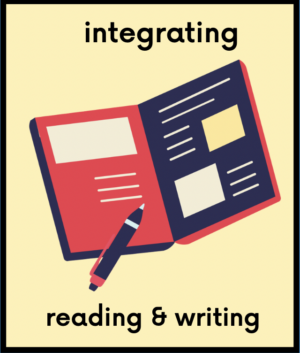
Click to download the PowerPoint Slides for Three Modes of Writing
Worksheet for Three Modes of Writing: Narrative, Exposition, and Argument
(Accompanies Google Slides: “Three Modes of Literary Expression”)
Lesson and Low-Stakes Activity (1 hour)
Learning Goal:
The accompanying slide show offers a basic lesson on the three types of written expression, with class participation and subsequent practice at the end. This is a useful introduction to a central principle of critical reading: realizing that sophisticated readers categorize writing and can distinguish a writer’s fundamental approach and method and anticipate the basic rhetorical characteristics of each type.
From here, the instructor can move on to questions of audience, techniques, voice and style. An advantage to this discussion is that students often possess some knowledge of the terms, and can often answer the individual questions in a call and response pattern. Faculty can also coax answers from students by providing hints.
In-Class Activity:
Following the powerpoint presentation, students read three excerpts from various texts below. Students should 1) explain the mode of writing of each paragraph and why they label it as they do; and 2) write some cursory annotation and analysis of the excerpts.
Suggestions:
1) Faculty might also ask students to write a paragraph in each mode.
2) Faculty can also choose sentences and ask what kind of text they might come from.
3) Students can complete the activity individually in-class or out-of-class, in pairs or in small groups in-class.
Directions to Students:
Below are three paragraphs, one in each mode of writing.
- Label each as narrative, exposition or argument and mark where you realized which it was and why. Be prepared to explain why you chose this mode.
- Underline key ideas or expressions (just the most important ones). Why do these seem important to you as a reader? Remember, go back to the distinct features of the mode described in the slides.
Example #1
As we convert more reading material whether newspapers, textbooks, or recreational reading to digital formats and we learn more and more online, some publishers and politicians find public libraries to be competition that harm profits in a fragile business; they would prefer that we eliminate libraries and instead give everyone an iPad or tablet.
Certainly, libraries, with their “brick and mortar” buildings and on-site professional staff are expensive. Some maintain that they are also less convenient than tablets which allow you to access your book from home or wherever you are without going to a library. It might also be better for the planet to use less paper, less space, less shipping and fossil fuels all required to move physical books around and consumers can rent digital copies whenever they wish.
However, we should think carefully before we accept arguments claiming libraries are now obsolete. First, studies have shown that students learn less when they read online. A study done on digital versus paper book reading found that people read 20-30% more slowly and retain 20% less information versus print. Digital screens are also much harder on the body, especially the eyes, as compared with print. Tablets become obsolete quickly, break and add an extra expensive item to daily reading. Who will supply replacements? And current books would have to be rented or purchased. Libraries lend books for free as a public service.
Furthermore, lending books is not the only role a library plays. Libraries can serve multiple purposes including as places to learn to use technology and get support and recommendations from librarians. They can be especially useful for children just learning to read and often serve as literacy anchors in communities. They are public institutions, not private businesses.
Example #2
The conductor and the whole crew knew me from seeing me with my father so often. They remembered me for another reason too, which embarrassed me a lot. This very train and crew had been my first experience with railroads.I had seen trains often, but never up so close as that day about four years before when Papa had decided to take me up to Sanford with him. Then I was at the station with Papa and my two oldest brothers. We heard the train blow, leaving Winter Park, three miles south.So we picked up our things and moved down from the platform to a spot beside the track. The train came thundering around Lake Lily, and snorted up to the station. I was there looking at the thing dead in the face, and it was fixing it’s one big, mean-looking eye on me. It looked fit to gnaw me right up. It was truly the most fearsome thing!
Example #3
“Firstly, almost every human behaviour, from shopping to marriage to expressions of feelings, is learned. In Canada, people tend to view marriage as a choice between two people based on mutual feelings of love. In other nations and in other times, marriages have been arranged through an intricate process of interviews and negotiations between entire families, or in other cases, through a direct system such as a mail-order bride. To someone raised in Winnipeg, the marriage customs of a family from Nigeria may seem strange or even wrong. Conversely, someone from a traditional Kolkata family might be perplexed with the idea of romantic love as the foundation for the lifelong commitment of marriage. In other words, the way in which people view marriage depends largely on what they have been taught. Being familiar with these written and unwritten rules of culture helps people feel secure and “normal.” Most people want to live their daily lives confident that their behaviours will not be challenged or disrupted. Behaviour based on learned customs is, therefore, not a bad thing, but it does raise the problem of how to respond to cultural differences.”
Notes:
- Evelyn Burg, sample essay adapted from multiple articles, CC, OER.
- Zora Neale Hurston, Dust Tracks on a Road, New York: HarperPerennial, 2010, 83.
- From Introduction to Sociology, 2nd Canadian Edition adapted by William Little, Creative Commons 4.0 International License Open Source text.



Leave a Reply